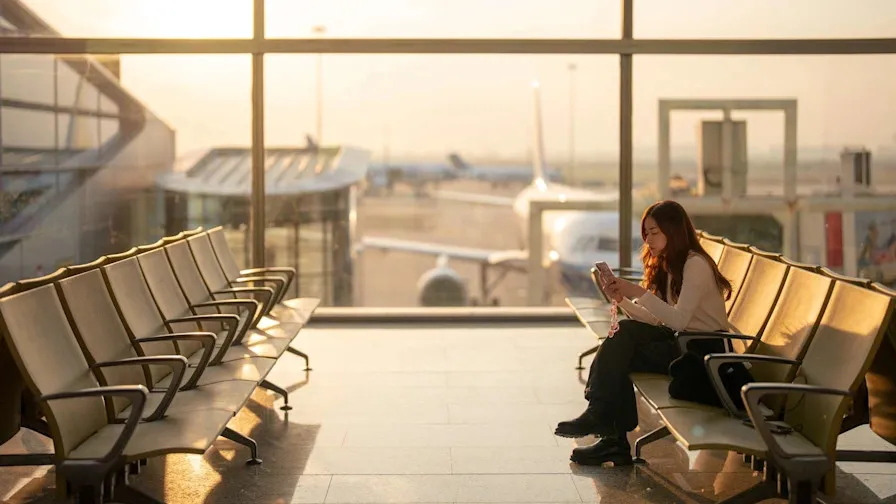The Rising Cost of Solo Travel: Airlines Charging More for Individual Passengers
In a recent revelation that has raised eyebrows within the travel community, a Minnesota-based travel website has unearthed a troubling trend affecting solo travelers. Major U.S. airlines, including American Airlines, Delta Air Lines, and United Airlines, are reportedly charging more for tickets purchased by individual passengers compared to those traveling in groups of two or more. This practice has significant implications for those who prefer or need to fly solo, potentially altering their travel plans and increasing the cost of adventure.
Understanding the Pricing Disparity
At first glance, this phenomenon appears counterintuitive. Why would airlines opt to charge solo travelers more when an empty seat costs them revenue? The answer lies in the intricate dynamics of supply and demand, alongside distinctive pricing strategies employed by airlines in a highly competitive marketplace.
Airlines need to maximize their profits. To do so, they often employ algorithms that analyze customer booking behaviors, and they adjust prices accordingly based on a plethora of factors including time of day, route popularity, and traveler demographics. Traditionally, flying in a group offers more negotiating power; airlines recognize that families and friends traveling together are more likely to book tickets in a specific price range, leading some airlines to optimize their fare structure.
The Impact of Group Travel Discounts
According to the analysis conducted by the MN-based travel website, when group travel is booked, airlines can afford to lower ticket prices slightly. This is likely due to the higher probability of these groups purchasing multiple tickets, thus ensuring planes reach optimal capacity. Alternatively, solo travelers may find that the same ticket on an apparently empty flight costs significantly more. This price disparity reflects the profit-maximizing strategies of airlines, who are attempting to capitalize on the increased likelihood of groups securing lower fares.
Delta, American, and United: The Main Players
Three of the largest U.S. airlines—Delta, American, and United—are at the forefront of this ticketing trend. Passengers have reported instances where booking a single ticket incurred fees that were noticeably higher than their group counterparts. In many cases, individuals looking to book a flight have found hikes in airfare that can range from modest increases to significantly inflated prices—sometimes exceeding those of nearby travel dates.
One common tactic employed by these airlines is to utilize tiered pricing for flights. This system evaluates the overall purchasing behavior of travelers, allowing airlines to adjust fares based on anticipated demand. For instance, during peak travel times or highly popular routes, airlines understand that scarcity can dictate value. If a flight is almost full with group bookings, they may raise the price for solo travelers in a bid to maximize every cent extracted from their available inventory.
The Customer’s Perspective
For most travelers, the hike in airfares for flying solo feels unjust. Many individuals fly alone for various reasons, ranging from business trips to personal journeys. Charging them more than their group counterparts appears not only discriminatory but also hampers the growth of a traveler’s desire to explore the world independently.
Feedback from passengers encapsulates the sentiment that solo flying should not evoke higher prices. John Smith, who frequently travels alone for business, stated, “I never expected that planning a solo business trip would cost me more than if I brought colleagues along. It’s frustrating when all I really want to do is complete my tasks efficiently.” The increase in ticket prices can deter potential solo travelers from booking flights, thereby affecting the overall travel industry.
Exploring the Future of Airline Pricing
The current ticketing model raises critical questions about the future of air travel. With our increasingly connected world, maintaining balance in fares—particularly for solo travelers—seems necessary. Here are some potential pathways that airlines may explore moving forward:
1. Transparency in Pricing
One of the most significant improvements that could benefit consumers is increased transparency in pricing structures. Airlines could provide clearer explanations about how ticket prices are determined, particularly for solo vs. group travelers. If customers understand the reasoning behind fare disparities, willingness to accept these differences may increase, albeit not without skepticism from solo flyers.
2. Competitive Market Dynamics
The emergence of low-cost carriers may offer more competitive pricing strategies that cater to solo travelers. Airlines like Southwest and JetBlue have made strides in maintaining lower fares for all travelers irrespective of group sizes. If traditional airlines started to observe and implement these competitive practices, they may draw in a substantial number of solo flyers who feel currently underrepresented.
3. Loyalty Programs and Discounts
Lastly, airlines could explore attaching perks and loyalty programs that benefit solo travelers more readily. If customers know they could earn points towards free or discounted flights, they may be more inclined to book, even if they initially perceive higher ticket prices. Experimenting with exclusive deals aimed at solo travelers could open new channels for retention and growth in this sector.
Conclusion: A Call for Fairness in Air Travel
As more solo travelers emerge in the post-pandemic travel landscape, airlines must recognize the demographic shift and adapt their pricing mechanisms accordingly. Charging higher fares for solo flyers not only undermines the principles of equal opportunity but also poses repercussions on overall revenue in the airline industry. Striking a balance in ticket prices will be crucial to sustaining market viability while catering to the diverse needs of all travelers.
Ultimately, the challenge remains for airlines to align with contemporary consumer behavior. As travel resumes and flourishes, companies like Delta, American, and United have the opportunity to rethink their pricing structures and ensure they accommodate the increasing number of solo adventurers seeking new horizons.







